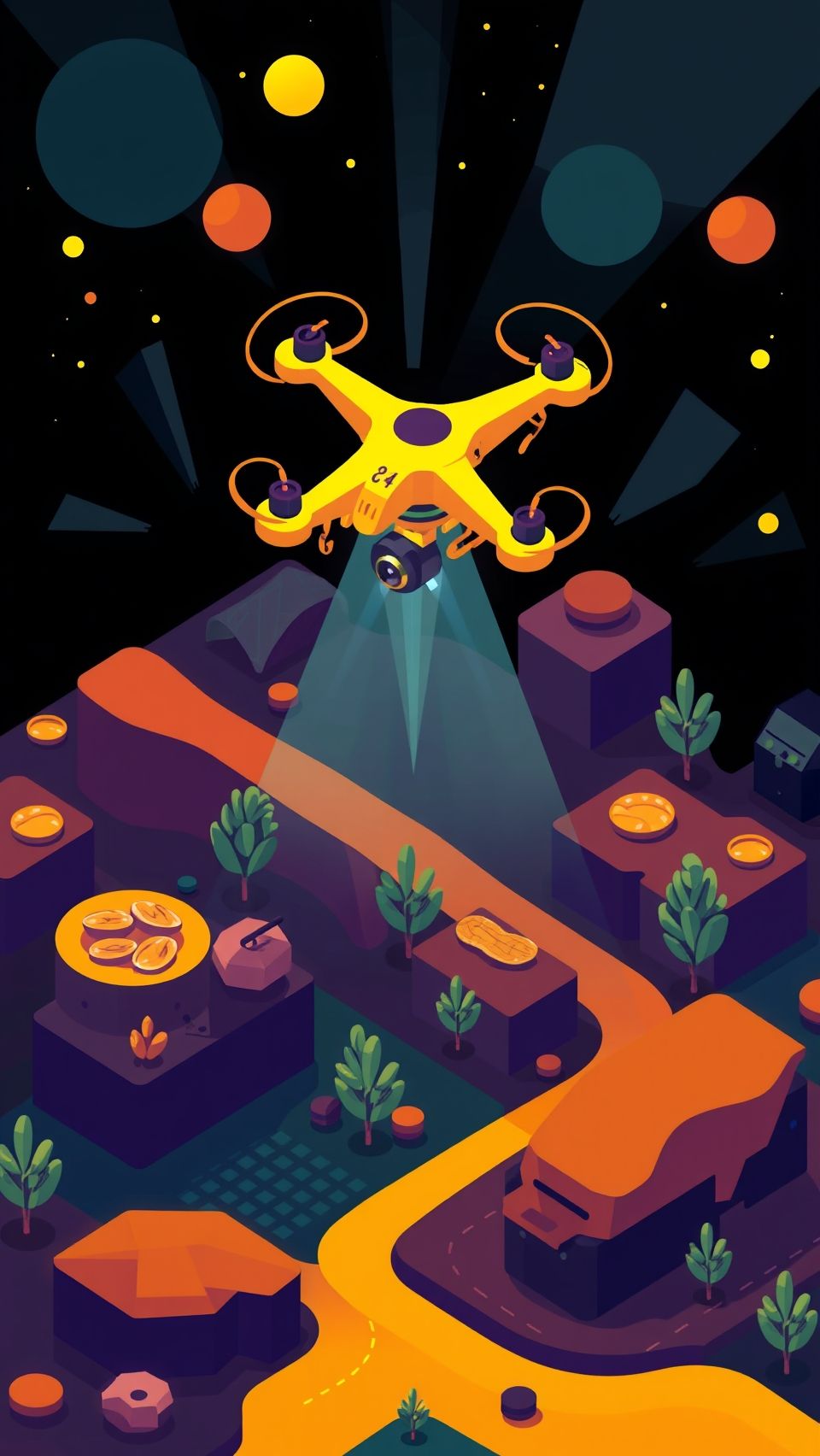28. June 2025
Drones Revolutionize Peanut Harvest With Deadly Precision Against Feral Hogs

The Night Owl project is a cutting-edge initiative that has taken the agricultural world by storm, using drones to save peanuts from the scourge of feral hogs. Born out of a desire to address the frustration felt by farmers who have been trying to tackle the issue of feral hogs through traditional methods, this innovative system aims to provide a low-cost, practical solution to the $150 million problem of feral hogs in Georgia’s peanut fields.
Farmers themselves were tired of playing “hog whack-a-mole” at 2 a.m., where they would try to catch hogs but end up losing sleep over it as well. Assistant professors Taeyeong Choi and Yan Fang at Kennesaw State University came up with the idea to use stationary cameras equipped with infrared sensors to spot animal movement in the dark. Once an animal is detected, drones are dispatched to investigate and provide real-time footage of the situation.
This allows farmers to pinpoint exact trouble spots and take targeted action to mitigate damage to their crops. The use of infrared sensors enables the drones to detect movement even in low-light conditions, making them highly effective at catching hogs. Ford Ramsey, the University of Georgia’s agricultural economist, has been working closely with Choi and Fang to crunch the numbers on how these drones can save crops and cash.
Ramsey’s research has shown that farms equipped with Night Owl are more likely to experience significant reductions in feral hog damage, resulting in increased profits for farmers. The project is being built on a foundation of existing drone technology, specifically the DJI Tello, which has been adapted for use in Night Owl. The Tello’s compact size and affordability make it an ideal choice for this application.
The system has already gained traction with farmers in Georgia, who are eager to get their hands on these drones. Its adaptability and effectiveness have earned it the thumbs-up from even the most skeptical of agricultural experts. When asked about the potential impact of Night Owl on the feral hog problem, Ramsey noted that “we’re not just talking about peanuts – we’re talking about a significant reduction in crop damage across multiple crops.”
The implications of Night Owl extend far beyond Georgia’s peanut fields, however. As one of the leading producers of peanuts in the United States, Georgia plays a critical role in ensuring food security for America and the world. The success of Night Owl could have a ripple effect on agricultural practices worldwide, with drones becoming an integral part of modern farming.
In addition to its practical applications, Night Owl also has a fun side – it’s like having your own personal Batman, swooping in under cover of darkness to protect the goods. With a low-cost solution, farmers don’t need to break the bank to keep hogs at bay. The collaboration between Kennesaw State University, the University of Georgia, and the Georgia Peanut Commission has set the stage for a truly groundbreaking project.
With Night Owl, we’re not just talking about drones – we’re talking about a new era in agriculture, one where technology meets innovation and the future is looking brighter than ever. As drones patroll fields worldwide, their impact will be felt for generations to come. It’s time to wake up to the power of drones in agriculture – get ready for an epic showdown between man and machine.
Photographs courtesy of Kennesaw State University